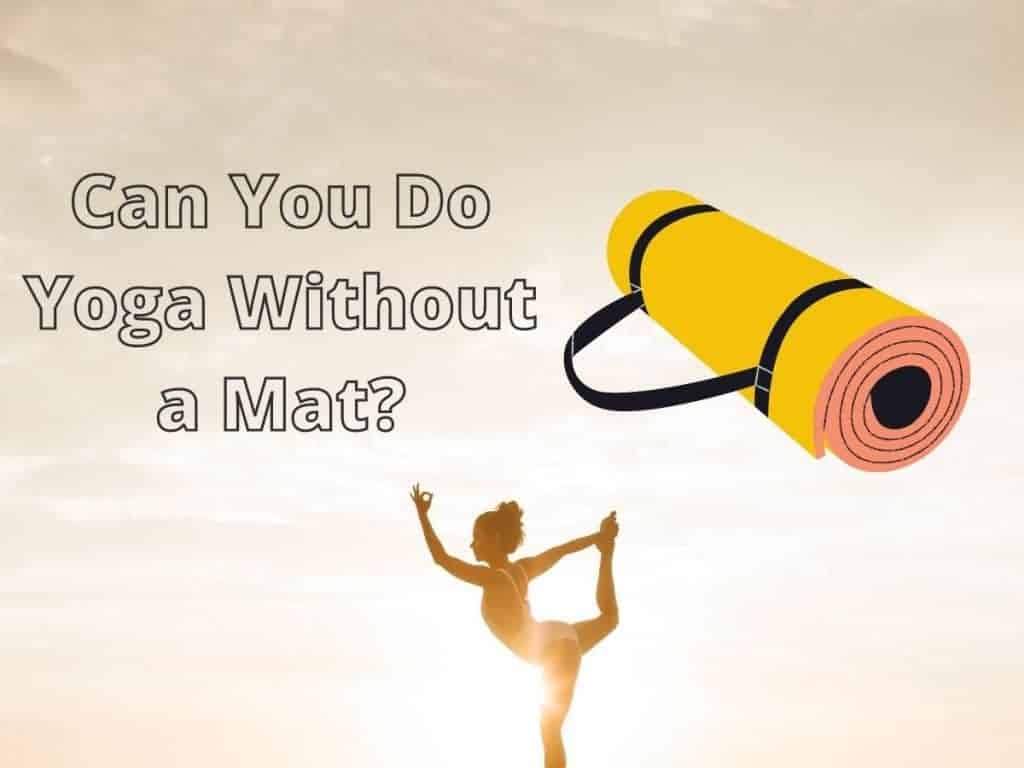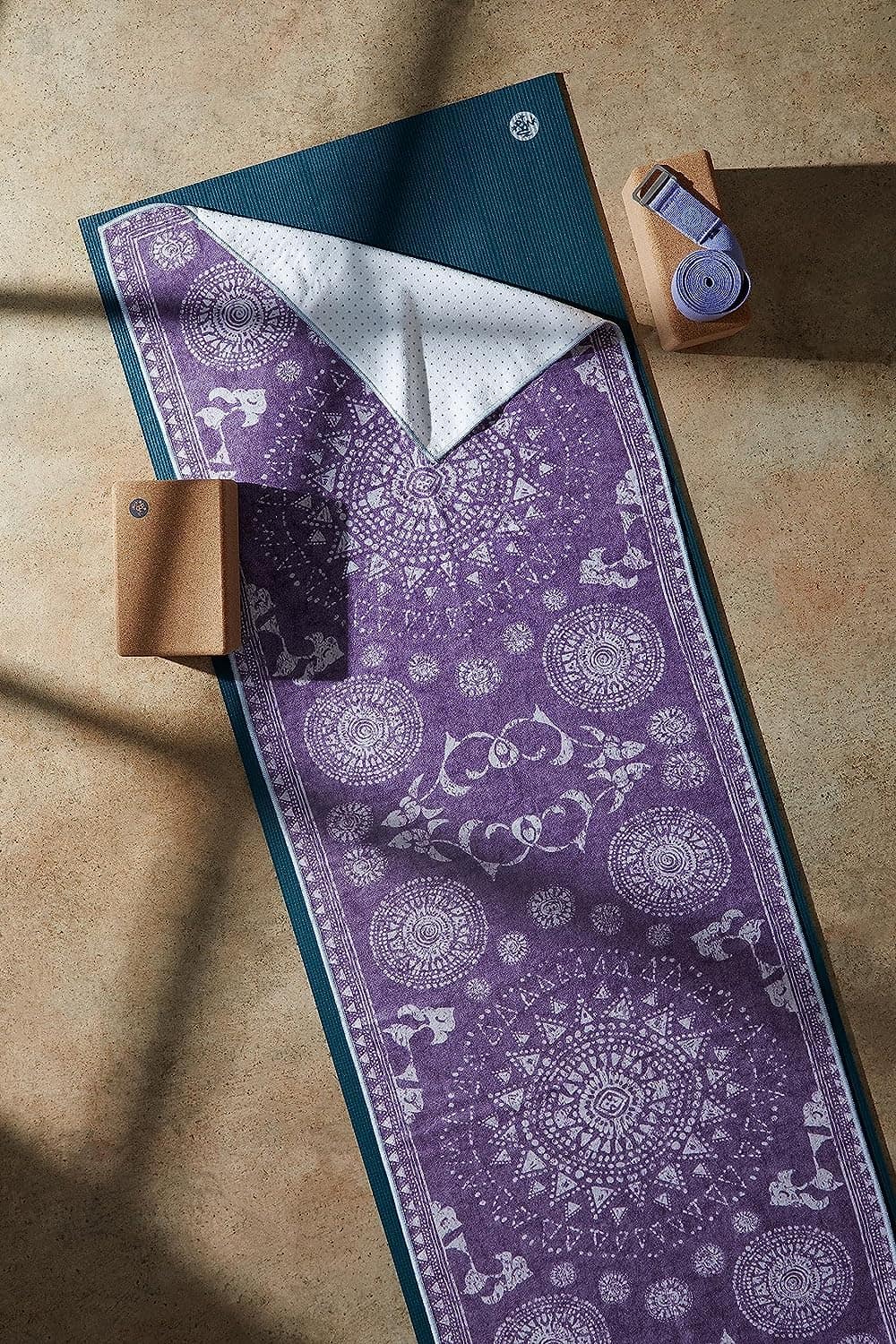If you’re new to yoga, you might be wondering whether you need a yoga mat. The truth is, a yoga mat is not a requirement for practicing yoga, but it can certainly enhance your experience. In this article, we’ll explore the benefits of using a yoga mat and alternative options for practicing yoga without one. We’ll also provide some tips for choosing the best option for your needs.
Can You Do Yoga Without a Mat? Benefits of Using a Yoga Mat:
Yoga mats provide several benefits, including:
- Improved Grip: Yoga mats have a non-slip surface that helps you maintain your grip during poses, even when you’re sweaty.
- Comfort: Yoga mats provide a cushioned surface that can help prevent discomfort and injury during poses that require you to put weight on your hands, knees, or other body parts.
- Hygiene: Yoga mats are easy to clean and can help prevent the spread of germs and bacteria.
We believe this yoga mat is one of the best available on the market right now:
Alternative Options for Practicing Yoga Without a Mat:
If you don’t have a yoga mat or don’t want to use one, there are several alternative options to consider:
- Carpet: If you have a carpeted floor, you can use it as a substitute for a yoga mat. It provides some cushioning and can help with grip, although it may not be as effective as a yoga mat.
- Towels or Blankets: If you have towels or blankets at home, you can use them as a makeshift yoga mat. They won’t provide as much cushioning or grip as a traditional yoga mat, but they can be a good option in a pinch.
- Grass or Sand: Practicing yoga on natural surfaces like grass or sand can be a great way to connect with nature and add an extra challenge to your practice. However, these surfaces may be uneven or slippery, so it’s important to be cautious and mindful of your movements.
Tips for Choosing the Best Option:
When choosing an alternative option for practicing yoga without a mat, consider the following:
- Safety: Make sure the surface you choose is safe and free from hazards like sharp objects or uneven terrain.
- Comfort: Choose a surface that provides enough cushioning to prevent discomfort and injury.
- Grip: Look for a surface that provides enough grip to prevent slipping and sliding during your practice.
Great Yoga Mat Towel – Yogitoes
About this product:
- Anti-Slip Bottom: Patented Skidless Technology with silicone nubs for superior grip during hot and sweaty yoga.
- Yoga Support: Ultra absorbent, quick-drying, and sustainable Yogitoes in beautiful designs.
- Eco-Friendly: Made from at least four recycled plastic bottles, reducing energy consumption, and free from harmful dyes.
Some Recommended Yoga Mats
In case that you happen to change your mind in the future and decide to go grab a yoga mat, you may check out our recommendations below:
| Brand and Model | Thickness | Material | Size | Weight | Rating |
|---|---|---|---|---|---|
| Manduka ProLite Yoga Mat | 4.7mm | PVC | 71” x 24” | 4lbs | 4.8 out of 5 stars |
| Jade Harmony Professional Yoga Mat | 5mm | Natural Rubber | 68” x 24” | 4.5lbs | 4.7 out of 5 stars |
| Liforme Yoga Mat | 4.2mm | Natural Rubber with Polyurethane top layer | 72.8” x 26.8” | 5.5lbs | 4.8 out of 5 stars |
| Gaiam Performance Dry-Grip Yoga Mat | 5mm | PVC | 68” x 24” | 3.5lbs | 4.6 out of 5 stars |
| Manduka PRO Yoga Mat | 6mm | PVC | 71” x 26” | 7.5lbs | 4.7 out of 5 stars |
| Heathyoga Eco-Friendly Non-Slip Yoga Mat | 6mm | TPE | 72” x 26” | 2.2lbs | 4.6 out of 5 stars |
| TOPLUS Yoga Mat | 6mm | TPE | 72” x 24” | 2.2lbs | 4.6 out of 5 stars |
| BalanceFrom GoYoga+ All-Purpose Yoga Mat | 12mm | PVC | 71” x 24” | 2.6lbs | 4.5 out of 5 stars |
These yoga mats are the best high-rating options with all of them having a rating of 4.5 stars or above.
- The Manduka ProLite Yoga Mat, Jade Harmony Professional Yoga Mat, and Liforme Yoga Mat are all made with natural rubber, which is a sustainable and eco-friendly material.
- The Manduka PRO Yoga Mat is the thickest mat on the list at 6mm, which provides extra cushioning and support.
- The Heathyoga Eco-Friendly Non-Slip Yoga Mat and TOPLUS Yoga Mat are both made with TPE, which is a non-toxic and environmentally friendly material.
- The BalanceFrom GoYoga+ All-Purpose Yoga Mat is the thickest mat on the list at 12mm, which provides maximum comfort and support.
When choosing a yoga mat, it is important to consider factors such as thickness, material, size, and weight, as well as personal preferences for grip and texture. Ultimately, the best yoga mat is one that feels comfortable and supportive during your practice.
Conclusion:
In conclusion, while a yoga mat is not a requirement for practicing yoga, it can certainly enhance your experience. However, if you don’t have a yoga mat or don’t want to use one, there are several alternative options to consider.
When choosing an alternative, make sure to consider safety, comfort, and grip. Ultimately, the best option is the one that works best for your needs and preferences.
Originally posted 2023-04-04 17:41:43.





